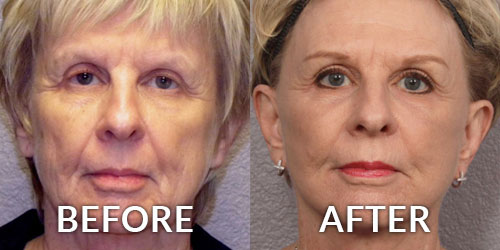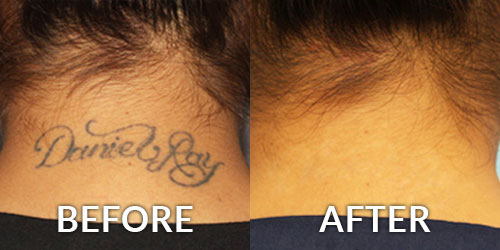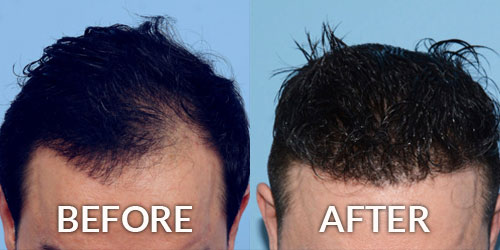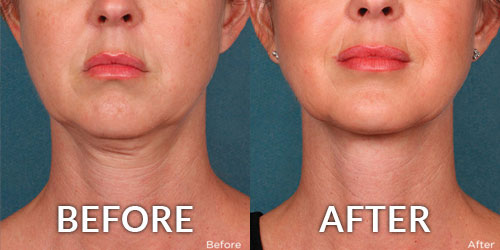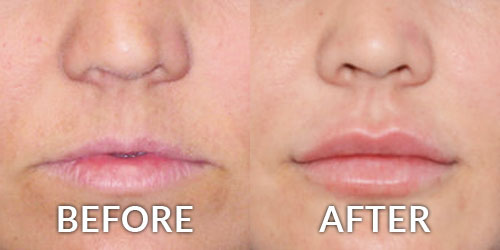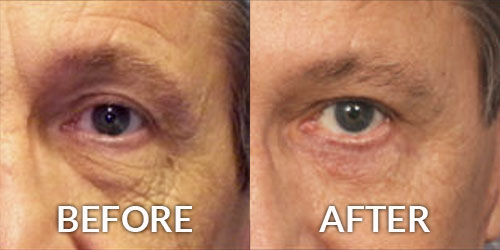Facial Laxity
Consultations offered at our two convenient locations in Phoenix and Scottsdale

Facial laxity is a natural phenomenon that occurs with age as the skin loses collagen and features become deflated. It leads to wrinkles and fine lines, volume loss, and dull-looking skin. As waves of patients undergo significant weight loss thanks to new regimens that utilize semaglutide, we are seeing the demand for volumizing and skin rejuvenation treatments increase rapidly. Correcting facial laxity typically involves adding volume with dermal fillers or PRP, and in some cases cosmetic surgery to address extremely loose skin.
Phoenix Skin Medical Surgical Group offers a range of treatments to increase the skin’s elasticity and add life back into the face. To schedule a consultation with one of our patient coordinators, please call our Phoenix, AZ or Scottsdale, AZ office at (602) 222-9111 or (480) 473-9111 or fill out the online contact form.
Contents
Facial Laxity Treatments: Non-Surgical
Medications such as Ozempic, Wegovey, and other semaglutide variants are often used for rapid weight loss. (1) When a patient’s weight drops dramatically, this often leads to an anticipated loss of volume in the body; particularly in the abdomen, arms, legs, and other areas. The face may be the last place weight loss is noticeable for some patients or the first area they start to see it! Treating facial laxity means not only tackling volume loss but rejuvenating the skin as well.
Phoenix Skin has a fully-equipped medspa with injectables, chemical peels, laser treatments, and surgical procedures. We create a treatment plan that works best for you that provides long-term results.
Cellenis PRP and Cellenis Derma RPR
PRP, or platelet-rich plasma, is a substance found in the blood after separating its components via centrifugation (fast-paced spinning). Cellenis PRP is a treatment in which PRP is injected into the face to promote rapid collagen production and replace volume loss. Your provider draws a small amount of your blood, puts it through the Cellenis centrifugation machine to separate the PRP, and then injects it in a predetermined pattern on the face. It is a minimally invasive treatment that uses your own analogous material to rejuvenate the skin and provide long-term elastin and collagen upkeep.
Cellenis Derma PRP is known for its regenerative properties. The Cellenis Derma PRP’s proprietary processing can convert your body’s proteins into a gel-like structure that can support dermal architecture, it is slowly reabsorbed by the body over a period of 4-6 months. It provides immediate volume and helps support dermal health over time by releasing proteins and growth factors.
Microneedling with PRP
Studies have shown that combining microneedling and PRP greatly increases its efficiency. By microneedling the skin first, the tiny needles act as an avenue or shortcut for the PRP delivery process. The provider first performs a microneedling procedure using a device with 14 tiny, sterile needles that puncture into the skin at a specific depth. Then, they apply the PRP as a topical treatment so the skin can absorb it, speeding up wound healing. This both reduces the appearance of wrinkles and adds plumpness back to the skin. (2)
Dermal Fillers & Injectables
There are many popular injectables used to add volume to the face. Phoenix Skin offers:
- Juvéderm: These hyaluronic acid dermal fillers are intended to correct wrinkles and fine lines for patients. We use Voluma XC to add volume to the midface (cheekbones) to liven up the facial profile and restore a youthful contour. We also offer Volux to completely reshape and restructure the lower third of the face. For patients looking for plumper and more shapely lips, Volbella may be their best choice.
- Fat Transfer: After using liposuction to remove fat from other areas of the body, the provider injects prepared fat cells into the face to add volume. This treatment is popular because there is little risk of rejection. Using a patient’s own tissue makes this procedure very safe and highly effective.
Thermage
When it comes to collagen production, the standard approach is typically controlled damage. Thermage technology uses radiofrequency energy to heat the inner layer of skin, tightening the collagen within and promoting new collagen growth. This device is non-invasive and effective at reducing wrinkles by increasing the production of collagen. In skin rejuvenation, collagen is one of the most important stepping stones to a glowing and healthy-looking complexion. When more collagen is present, the facial skin plumps and fills to remain youthful.
Ultherapy
Though technically a laser treatment, Ultherapy targets only the innermost layers of skin and tissue with ultrasonic energy. This induces the production of collagen without directly damaging the skin’s surface. This treatment affects the SMAS layer that supports the skin above it and upholds your contours. By treating this layer of tissue specifically, results are tighter and more even than other comparable laser-focused skin rejuvenation.
Personal Consultation at Phoenix Skin
During your consultation, we will talk about your treatment options and answer any questions or concerns you may have. If a surgical procedure is in your treatment plan, your provider will explain this process as well. A member of our staff will schedule your future appointments at the end of this meeting.
How to Prepare for Treatment

For most treatments, you should avoid anti-inflammatory medications such as ibuprofen before appointments. Please refrain from tobacco and nicotine use as these negatively impact the healing process. We may ask that you alter or completely discontinue certain herbal supplements and medications that may interfere with your treatment.
It is important to maintain a steady weight before undergoing facial laxity treatments. If your weight is still heavily fluctuating, your results may be impacted or reversed. Keep a nutritious diet and active lifestyle to regulate your health.
Treatment Recovery
Minimally invasive facial laxity treatments do not typically have any downtime. Many are simple and quick, allowing you to get back to your regular life without hassle. Your skin may be irritated, red, or swollen depending on the treatment and its severity, but this will subside.
Results
For some of the treatments listed above, you will see instant results, while others will require weeks to months to become apparent. Even with PRP where the process is slower and you must wait for the collagen regeneration, these offer noticeable volume increases without surgery. Dermal fillers offer a spectrum of options, with results lasting anywhere from 3 months to 2 years depending on your circumstance and starting point.
To protect your results, wear sun protection whenever outside and implement the recommended skincare routine. If you are in the midst of your weight loss or have experienced extreme weight loss, you may need repeated treatments for optimal results. Those curious about other dermatology treatments offered at Phoenix Skin can read more about us on our blog.
Surgical Procedures for Facial Laxity
Mini Facelift
For patients who have more severe skin laxity and sagging, a mini facelift may be a better treatment to help achieve their goals. Unlike the traditional facelift, this procedure uses shorter incisions in front of the ears to tighten the underlying muscles along the lower third of the face. The surgeon trims the excess skin after tightening the muscles and carefully sutures the incisions to lift the facial features to a more youthful-looking contour. For those with facial laxity from rapid weight loss, a mini facelift can provide less invasive yet dramatic results.
Neck Lift
This cosmetic procedure contours and tightens the jawline, neck, and chin. A neck lift provides comprehensive rejuvenation by addressing the muscle underneath the skin that typically creates bulk as a patient gets older. Depending on the weight loss patient, this surgery may provide the necessary tightening and skin removal to improve their overall facial profile. The surgeon typically makes the same two incisions near the ears used in a mini facelift. They use these to address the platysma muscle, tighten it if necessary, and remove excess after redraping the skin.
How Much Does Facial Laxity Treatment Cost in Phoenix?
Since every treatment plan is customized to the patient, costs will vary. Your provider will break down the total cost during your private consultation. To schedule yours today at Phoenix Skin, please call (602) 222-9111 to reach our Scottsdale or Phoenix offices. Contact us online by filling out this convenient form to take the next steps forward.
FAQ
Who is a good candidate for facial laxity treatments?
Anyone with volume loss in the face and the desire to rejuvenate the skin is a good candidate for facial laxity treatments. They are particularly beneficial for those who have lost weight and have experienced “Ozempic Face”.
Will my results of facial laxity treatments be long-lasting?
The lasting effects of these treatments can be seen for many months to many years depending on the treatment and patient. A mini facelift can offer up to 10 years of consistent facial rejuvenation, whereas dermal fillers offer semi-permanent volume and restructuring that eventually dissolves.
What are some non-surgical facial laxity treatments?
Non-surgical treatments such as dermal fillers, injectables, and microneedling with PRP can improve the appearance of facial laxity.
Can a neck lift be combined with a mini facelift?
Yes, combining a neck lift with a mini facelift can provide comprehensive facial rejuvenation and more harmonious results. We frequently perform combination procedures to address facial laxity and achieve overall facial harmony.
References
- Singh G, Krauthamer M, Bjalme-Evans M. Wegovy (semaglutide): a new weight loss drug for chronic weight management. Journal of Investigative Medicine. 2021;70(1):jim-2021-001952. doi:https://doi.org/10.1136/jim-2021-001952
- Nabili V, Kochhar A, Rawnsley J, Keller G, Sand J. Platelet-Rich Plasma for the Aesthetic Surgeon. Facial Plastic Surgery. 2017;33(04):437-443. doi:https://doi.org/10.1055/s-0037-1604240


